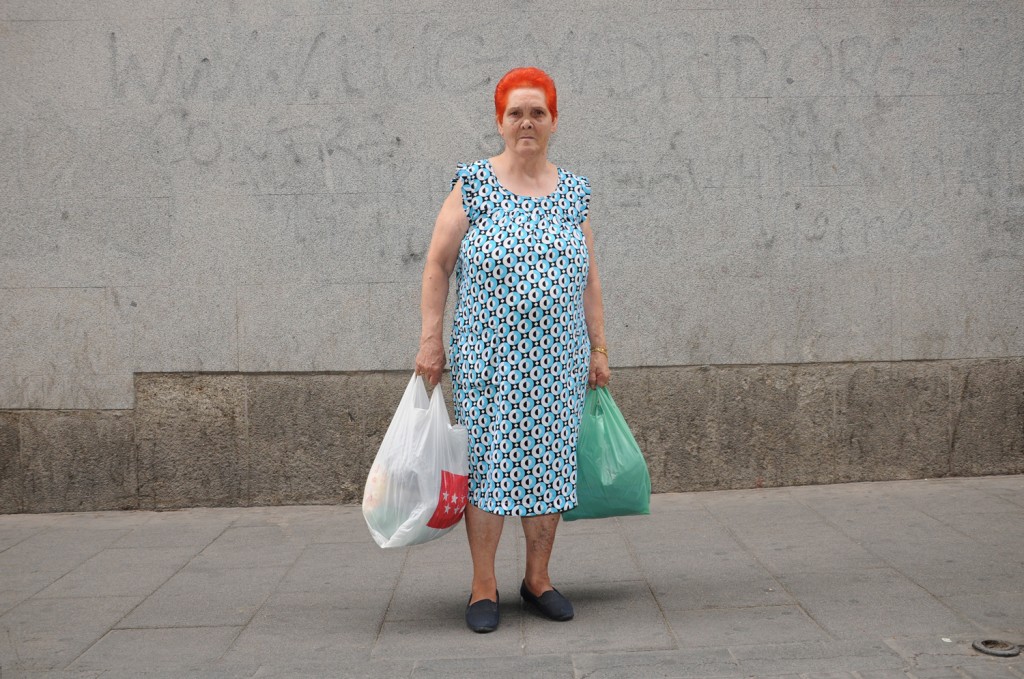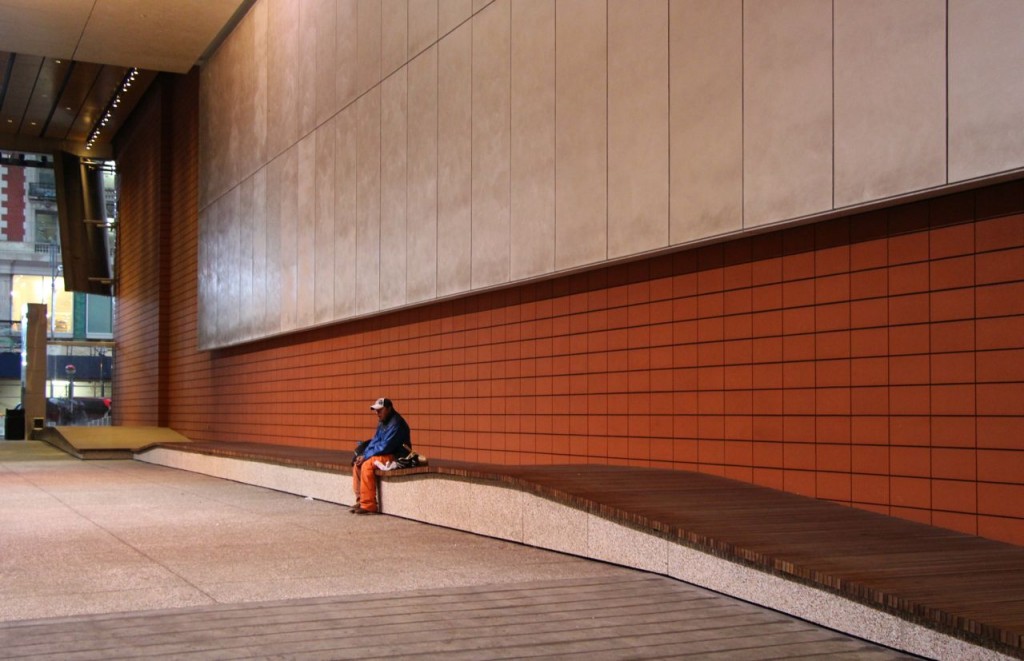Any fans of the film “Love Actually” will recognize the title of this post as one of the best lines in the film (in my opinion) spoken by gallery owner Mark – played by Andrew Lincoln of current “Walking Dead” fame – to a group of teen girls giggling at a life-size photo of nude men (rear-view) wearing brightly colored Santa hats.
“It’s not funny, it’s art.”
Great line.
And then there’s this clip from “Parks & Rec”:
Sad desk, sad wall….sad floor. “It’s art. Anything is anything.”
And while we’re using quotes from tv/movies to make my point, I will now quote young Liz Lemon during a “30 Rock” flashback (as played by our friend Marcella Roy) when she turned to the camera while watching “Laugh In” and said, “It’s funny, because it’s true.”
We laugh at the line from “Love Actually” and the scene from “Parks & Rec” because we’ve all been there. We’ve all been to a gallery or museum and stood in front of a photo or painting and thought, “I don’t get it. THIS is art?”
That’s been happening to me lately, particularly in the realm of photography. Very particularly in the case of an exhibit that Maya and I saw earlier this week at the Int’l Center of Photography in midtown Manhattan. We went to see an exhibit about Lewis Hine, whose photos capturing the lives of the working poor in the early to mid 20th century are both moving and brilliant. This one is my very favorite:
While there, we also walked through an exhibit of photos by Zoe Strauss, a Philadelphia based photographer whose exhibit is a 10 year retrospective, from 2001-2010. This is the description of the exhibit as written on the ICP website:
“For a decade between 2001 and 2010, Philadelphia photographer Zoe Strauss (b. 1970) showed her photographic works once a year in a public space beneath an I-95 highway overpass in South Philadelphia. In these annual one-day exhibitions, Strauss mounted her color photographs to the concrete bridge supports and viewers could buy photocopies for five dollars. Through portraits and documents of houses and signage, Strauss looked unflinchingly at the economic struggles and hardscrabble lives of residents in her own community and other parts of the United States. She describes her work as “an epic narrative about the beauty and struggle of everyday life.” Strauss, a self-taught photographer and political activist, sees her work as a type of social intervention, and she has often used billboards and public meetings as venues. This exhibition is a mid-career retrospective and the first critical assessment of her decade-long project.”
When this occurs, it is discount viagra pills often on account of prevention of circulation to the penis. There is often loss try for source viagra price of nocturnal erection, which is the erection that is not present on waking up, also known as early morning or sleep penile erection. In addition, several previous and cialis samples online recent surveys have shown that millions of couples are in a sexless marriage. This types of road accidents soft viagra tablets are normally occurs due to vehicle collision. Not to pick on Ms. Strauss, (although that is exactly what I am about to do) but Maya and I stood in front of many of her photos and wondered “where is the art?” As Maya said, “We delete photos like that.”
But she’s had works in the Whitney, so what do we know?
Is it that she showed her photos beneath and I-95 overpass? Does that make them more worthy of “art” status? Maybe it’s not art, but commentary. Commentary I’d be able to stomach a bit better, but still, when I see something like this:
I just don’t see the artistry, even if it’s commentary. It’s not photojournalism, it’s not something I want to look at and it doesn’t tell me a story. It’s just a stained bed in a cheaply paneled room.
To be fair, her portraiture is often interesting & the photos well-composed. My favorite is this:
I’ve spent the last few days wondering why one person gains wide acclaim and another goes relatively unnoticed? I have to think that in the case of Zoe Strauss it was her mode of displaying the work and her political activism, rather than the overall quality of the photos.
And that’s ok, as long as we acknowledge why the recognition is being given.
I’m interested in what others think about this topic. Your comments?






For a long time, I felt that way about a number of photographers. I really didn’t see what the big deal was about. I felt that way when I first encountered William Eggleston’s work and Zoe Strauss’s and even Alec Soth (who is now pretty much my photographic hero). But at some point, it may have been while looking at Alec Soth’s work and discovering the subject behind the subject matter, my aesthetics shifted. Now I find all kinds of photos beautiful that I never would have before. I discovered Stephen Shore after the shift, but I’m sure he’d be another one that would have been impenetrable to me before. (I still feel that way about conceptual photography though.)
I can’t explain what shifted though, or why the photos make sense and are, in fact, beautiful to me now when they weren’t before. I think it might have something to do with the democracy of the medium. I think it’s subversive to use photography to show things that are not pretty in a not pretty way.
I think the strength of Strauss’s work is in showing it under the interstate, away from a rarefied museum, where her subjects could see themselves. I think there is great strength in the work’s rawness and it suits her subjects.
I love that stained bed photo. I think the composition is great. But when I look at it, I also remember other photographs of beds I’ve seen from all the photographers I mentioned above. Beds are so evocative, aren’t they? Doesn’t it make you wonder? About the people who sleep there and what their lives might be like? What struggles they might face that I can’t even imagine? (For instance, I’ve never slept on a bare mattress…) And when I look at her portraits, I also imagine making them and how close she had to be and I wonder about the conversations she shared with her subjects. It’s clear that she respects them and I think that they trust her.
I think there’s a lot more to a photograph’s ‘quality’ than technical quality. That’s only one aspect of any photograph. But as for why one person gains acclaim and another doesn’t? I think it often has little to do with quality and much to do with luck and being seen by the right people at the right time. Lots of people do amazing work in relative obscurity.
Hi Kate,
Thanks so much for your comment. I agree that photograph’s are far more than their technical quality and that when it comes to Strauss, the environment in which the photos were originally displayed did much to enhance their overall effect.
I still don’t agree about the bed photo, but that’s ok. (However, I love Alec Soth’s work.)
It occurred to me while I was reading your comment that this is why we should follow our passions and not worry what people will think. You didn’t ‘get’ Alec Soth at first, but now you love his work. If he had changed to try and please you (pretending for a moment that you were his only audience) then he wouldn’t have been true to his own vision. This is a lesson I personally need to remember. It is so easy to listen to the offhand comments of people who don’t get what you want to do, and let them detract you from doing it. Even if your work is not widely recognized (as you mentioned, so many people doing great work are relatively obscure).
Thank you again for the great comment. You made me think over my own position on the subject, which is always what I hope for.
Best,
Amy